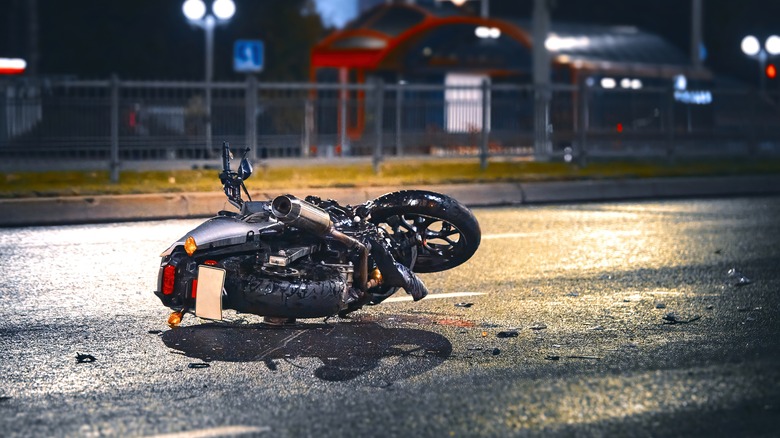
Motorcycles offer a unique and exhilarating riding experience, but they also present inherent risks compared to enclosed vehicles. One common question that arises is why motorcycles don’t have seatbelts like cars. This seemingly simple omission stems from fundamental differences in design and safety principles. This article will delve into the reasons behind this absence, exploring the complexities of motorcycle safety and the alternatives employed to protect riders.
We’ll examine the unique challenges posed by motorcycle riding, analyze why traditional seatbelts are unsuitable for this context, and highlight the crucial role of protective gear in mitigating risks. By understanding these factors, we can gain a deeper appreciation for the distinct safety considerations involved in motorcycling.
Motorcycle Safety
Motorcycle safety is paramount, as riders are exposed to the elements and have less protection than occupants of cars or trucks. This vulnerability necessitates a comprehensive approach to safety that goes beyond simply installing seatbelts.
Motorcycles rely on a combination of rider skill, responsible behavior, and specialized protective equipment to minimize risks. Factors like weather conditions, road surface, and traffic density all contribute to the overall safety equation for motorcyclists.
Understanding these variables and adapting riding techniques accordingly is crucial for safe motorcycle operation.
Seatbelts on Motorcycles
Unlike cars, where seatbelts are designed to restrain occupants within a relatively enclosed space during a collision, motorcycles present a different scenario.
The open nature of a motorcycle means that riders are not confined by a rigid structure. In a crash, a traditional seatbelt could potentially restrict the rider’s movement, leading to more severe injuries as they are thrown against the bike or the road surface.
Furthermore, the force exerted by a seatbelt during an impact might be too great for a motorcycle rider’s body, causing internal damage or broken bones.
Protective Gear for Riders
To compensate for the lack of seatbelts, motorcyclists rely heavily on protective gear to minimize injury risks. Helmets are essential for protecting the head and brain from impact, while jackets and gloves offer abrasion resistance and padding to shield vulnerable areas like elbows, shoulders, and hands.
Boots with ankle support provide crucial protection for the feet and lower legs. Choosing high-quality, properly fitted protective gear is paramount for maximizing safety on a motorcycle.
Risks of Seatbelts on Motorcycles
While seatbelts are undeniably effective in cars, their application to motorcycles presents several potential risks:
Restricted Movement: A seatbelt could prevent a rider from adjusting their position during a crash or maneuvering to avoid obstacles. This restricted movement could lead to more severe injuries as the rider is unable to react effectively.
Increased Force on Vulnerable Areas: The force exerted by a seatbelt during an impact could concentrate on specific areas of the body, potentially causing fractures or internal damage.
- Tumbling and Entanglement: In a crash, a seatbelt might cause a rider to tumble uncontrollably or become entangled with the motorcycle, increasing the risk of further injury.
Alternatives to Seatbelts
Instead of relying on traditional seatbelts, motorcycles prioritize other safety measures:
- Rider Training: Proper training equips riders with the skills and knowledge necessary to handle their motorcycles safely and respond effectively in challenging situations.
- Defensive Riding Techniques: Anticipating potential hazards, maintaining a safe following distance, and being aware of surroundings are crucial defensive riding practices that minimize risks.
- Protective Gear: As discussed earlier, helmets, jackets, gloves, and boots provide essential protection against impact forces and abrasion during a crash.
Conclusion
The absence of seatbelts on motorcycles is not an oversight but a deliberate design choice based on the unique safety considerations inherent in this mode of transportation. While seatbelts are effective in cars, their application to motorcycles could potentially cause more harm than good due to the open nature of the vehicle and the potential for restricted movement during a crash. Instead, motorcycles rely on a multifaceted approach to safety that emphasizes rider training, defensive riding techniques, and specialized protective gear to mitigate risks and protect riders.
